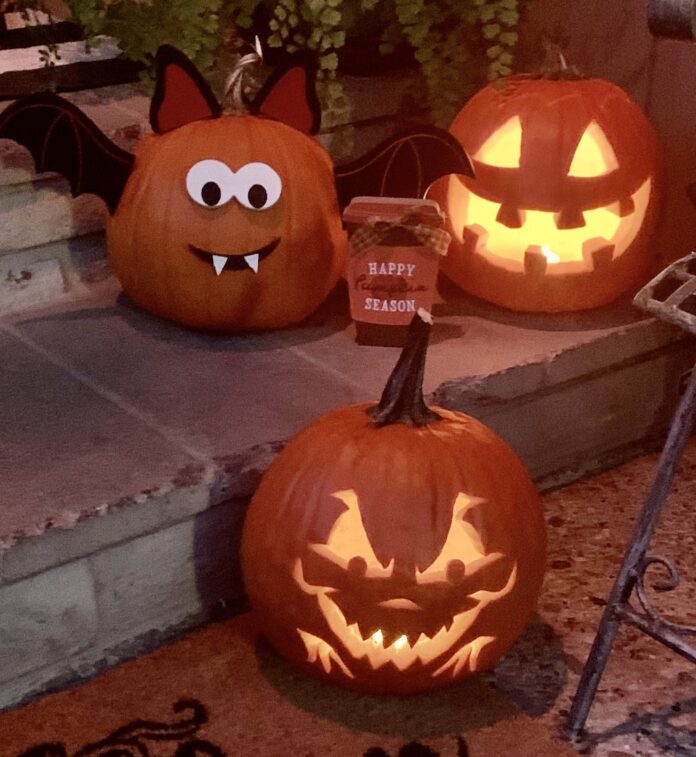
My little neighborhood goes all out decorating for Halloween. It’s fun to see what the kids have created with some simple supplies. I only have a small display with a pumpkin, colorful winter squash and mums along with some DIY ghosts made from dinner napkins. I do have lots of orange and rust perennials in my little garden. Here are some other tips for this time of year from the garden.
If you want to decorate for Halloween there is plenty of plant material you can harvest from your own garden or nearby woods. Manzanita branches can often be found on the ground and make great arrangements combined with nandina or other berries. Some of the trees have started to turn color and their leaves can also be used for wreaths. The leaves of New Zealand flax last a long time and add fall color in bouquets.
It’s time to bring in any plants that you plan to overwinter in the house. Whether they’re the houseplants that you put out on the patio for the summer or frost-tender plants that you want to save, this is the time to bring them in and here’s why.
Although our nights are still above freezing, plants need to acclimate to the indoor environment before you start turning on the heater regularly. Be sure to wash them thoroughly and inspect them for any insects that may have taken up residence while they were vacationing outside. Usually, you can dislodge any hitchhikers with a strong spray of water but if that doesn’t do the trick, spray them with a mild insecticidal soap or one of the other mild organic herbal sprays like oil of thyme.
Another tip: Fall is not a good time to prune. Wounds heal slowly, leaving them more susceptible to disease. As a general rule, don’t prune when leaves are falling or forming. Wait to prune most trees until late in the dormant season or late spring after leaves and needles form. To avoid sap flow on birches and maples, prune after leaves mature.
Several years ago a friend gave me a Blue Hokkaido winter squash to decorate my front entry and eat afterward. It was delicious. Another year, I received a Cinderella pumpkin (Rouge viv d’Etampes) to decorate my front entry. It is said to have been the inspiration for Cinderella’s carriage. This French heirloom pumpkin was very popular during the 1880’s and will be tasty in pies and savory dishes later this fall. For now, the glowing orange-red color contrasts magically with the very pronounced lobes and flattened top.
Many gardeners feel the Cinderella pumpkin is the very best pumpkin to grow in your garden. It’s the first to set fruit, first to ripen and is mildew resistant. Their bright orange creamy flesh is perfect for baking. Oven-roasted they produce a pumpkin puree that is neither watery or bitter. Delicious in pumpkin spice muffins, pumpkin soup, or with vegetables and sausage. I even found a recipe for pumpkin mac n’ cheese baked in a pumpkin. I’m so excited.
Pumpkin was a staple food for the early pioneers. It was easy to grow as a few seeds dropped into a shallow hole grew into a mature fruit. Yes, technically they are a fruit not a vegetable along with summer and winter squash and gourds. Their thick rind would allow them to be kept almost indefinitely.
If you decide to grow the Cinderella pumpkin next year, you can start inside in pots or wait to plant in the ground when night temps are 55 degrees or over. In the garden, group them with other deep-rooted plants that grow rapidly and need lots of water such as corn, cucumbers, melons and tomatoes.
Jan Nelson, a landscape designer and California-certified nursery professional, will answer questions about gardening in the Santa Cruz Mountains. Email her at ja******@*ol.com, or visit jannelsonlandscapedesign.com.












